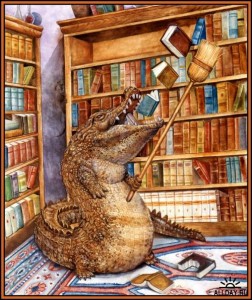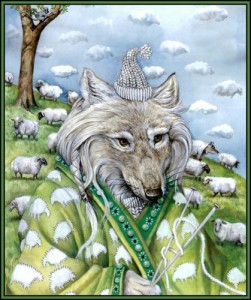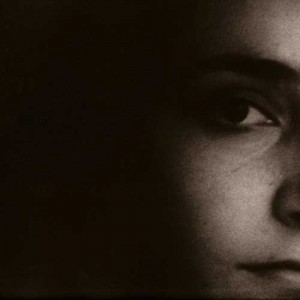Wallace Edwards (2013)
Wallace Edwards is a Canadian children’s illustrator who won the 2002 Governor General’s Award for his book Alphabeasts. He is a graduate of the Ontario College of Art. On October 16, 2007 Wallace Edwards was nominated for the Governor General’s award (children’s book illustration) again, for his most recent book, “The Painted Circus.” To date, Edwards has published five books, of which three have been nominated for this, Canada’s most prestigious literary award.[1]
Wallace Edwards is working with the Augmented Reality Lab at York University in 2013 to realize augmented and immersive materials: “Thematically, “Wally Edwards’ Baffling Cabinet of Generative and Disappearing Artefacts” builds on some of my experiences and preoccupations in the book world – my books on circus, optical illusion (Painted Circus), visual experiences that weave together unusually coupled animals (Mixed Beasts) and animals who live, for example, in strange Victorian Houses (Alphabeasts). It is also indebted to my fascination with the Collyer brothrs, strange and immense collections of all kinds and, of course, by the possibilities I see in the emerging medium of augmented reality itself: being able to ‘touch’ a virtual object and make it disappear, for example, or construct a miniature forest in an old shoe that can grow to inhabit an entire room. I am tremendously excited to explore the ways in which this emerging technology can challenge and extend my artistic practice.” — Wallace Edwards
Mike Hoolboom (2012)
Mike Hoolboom is a Canadian artist working in film and video. He has made twenty films and videos which have appeared in over four hundred festivals, garnering thirty awards, including four awards in Oberhausen, a Golden Leopard at Locarno, and he has twice won the award for the best Canadian short at the Toronto International Festival. He has been granted two lifetime achievement awards, the first from the city of Toronto, and the second from the Mediawave Festival in Hungary.
He has enjoyed retrospectives of his work at the Images Festival (Toronto), Visions du Reel (Switzerland), Cork International Festival (Ireland), Cinema de Balie (Amsterdam), Mediawave Festival (Hungary), Impakt Festival (Holland), Vila do Conde Festival (Portugal), Jihlava Documentary Festival (Czech Republic), Stuttgarter Filmwinter (Germany), Musée des Beaux-Arts de Caen (France), Sixpack Film (Vienna) and the Buenos Aires International Festival (Argentina).
He is a founding member of the Pleasure Dome screening collective and has worked as the artistic director of the Images Festival and as the experimental film co-ordinator at Canadian Filmmakers Distribution Centre.
Mike Hoolboom has written three non-fiction books, “Practical Dreamers: Conversations with Canadian Movie Artists” (Coach House, 2008),”Inside the Pleasure Dome: Fringe Film in Canada” (Coach House Press, 2001) and “Plague Years” (YYZ Books, 1998) a tongue-in-chic autobiography. His first novel “The Steve Machine” was published by Coach House Press in the fall of 2008. He has published more than one hundred articles on fringe media which have appeared in magazines and catalogues around the world.
Since 2004 he has been working on Fringe Online ( www.fringeonline.ca ) , a web project which makes available the archives of a number of Canadian media artists. This ongoing project currently consists of hundreds of pages of transcripts, reviews, interviews and scripts, and remains the largest publishing project in the Canadian fringe media sector.
Christine Davis (2008)
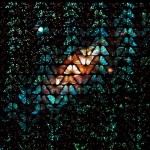
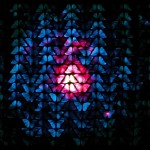
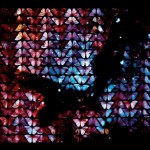
Images from “Tlön, or how I held in my hands a vast methodical fragment of an unknown planet’s entire history” (2003)
Artist Website
Christine Davis is Artist in Residence at Future Cinema Lab. Davis has long pursued an installation based practice that, while it eschews easy commercial classification, has resulted in a range of highly evocative and influential works. Her slide projection based installations and photo works are intellectually demanding, yet simultaneously resonate on visual, visceral and material levels. They are also influential, having engaged many of the key issues at the centre of recent developments in contemporary art.
Davis has proven she is capable time and again of producing ambitious exhibitions of great potency and sophistication. Interweaving technologies old and new, the range of her conceptual and material exploration is, following the lead of Michael Snow—an artist she greatly admires—unusually innovative: words laser etched onto contact lenses, genetic code sewn into armor and her extraordinary slide dissolves that combine analogue optics with digital control.
Davis is no stranger to the international art world. While she has shown at art fairs such as Art Basel and Art Forum Berlin, her most potent contributions have been within the context of museum and gallery exhibitions in Canada and abroad. She has been included in many group exhibitions that reveal the range of her concerns, from the exhibition “Embodying Faith” at the New Museum of Contemporary Art, New York, 1991, to the upcoming “Imagining Science” at the Art Gallery of Alberta. She has been included in international biennales such as “Prospect 1993” at the Frankfurter Kunstverein and most recently “Crack the Sky” in Montreal, 2007, and has been the subject of important one person exhibitions including those organized by Musée des beaux-arts de Montréal; The Power Plant, Toronto; CREDEC Paris; Indianapolis Museum of Art; Art Gallery of Ontario; Kitchener Waterloo Art Gallery, and upcoming at Musée d’art contemporain de Montréal. Her work is in public and private collections nationally and internationally. She has served on the board of directors of YYZ and the Power Plant, Toronto.
Davis has also long been involved in contemporary art’s discourses, principally as a founding editor of the international journal Public: Art/Culture/Ideas. Her editorial work intersects with the interests driving her practice—for example her translation of significant texts in continental philosophy by women theorists such as Sarah Kofman and Christine Buci-Glucksmann, while residing in Paris from 1984 to 1994, or the issue of Public she edited, “Sacred Technologies,” which was subsequently included on a course list for MIT.
Her work engages and extends feminist investigations in contemporary practice, an area of current critical attention, as evidenced by exhibitions such as “WACK! Art and the Feminist Revolution.” At its core, her work addresses the conception and representation of the body at key and transformative moments in the history of modernism, from the nineteenth century through to the current moment. It draws on highly wrought histories of visuality and explores the interconnections of such histories to mechanistic, technological and scientific cultures as well as concepts of the divine. As Art Forum critic Barry Schwabsky has noted, “Image and reality interfuse….Where the awareness of the construction of image reinforces physical presence, the suggestion of something unconscious, the dream-state, is entirely in keeping with Davis’s slide dissolves. It is this dynamic that she makes so vivid, this interaction on the skin of the screen.”
Currently Davis is working on a project “Unanimous Horizon,” a project that continues her exploration on the materiality of the screen. Combining Morpho butterflies, archival footage of the nineteenth century dancer Loïe Fuller, and an early nineteenth century hand coloured book ofEuclid’s Elements, the work will explore the relation between geography, geometry, and choreography. Fuller is the perfect encapsulation of Davis’s approach to the digital ecologies of projected images—she was the first dancer to copyright her choreographies for electric light. For Davis, Fuller is a tragic hero who foreshadows the mobility and ephemerality of the image saturated culture of the twenty-first century, as well as the conflation of the screen and femininity which is endemic to modernity. Fuller’s actions to gain copyright over the distribution of her images and choreography was a response to these new forms of distribution enabled through electricity—this foreshadows the astronomical problems of copyright in the digital age.

